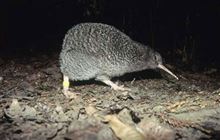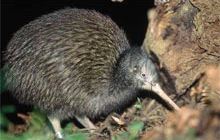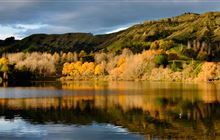Cape Sanctuary records most successful year yet
Archived content: This media release was accurate on the date of publication.
Introduction
Ongoing improvements of pest control efforts led to Sanctuary and New Zealand-firsts.Date: 12 November 2018
The Cape Sanctuary in Hawkes Bay has recorded a sanctuary first with the birth of three little spotted kiwi and another two nests incubated eggs due to hatch in the coming weeks.
It is the first documented time that little spotted kiwi have been born in Hawkes Bay and tops off a highly successful season at the sanctuary, which also includes the birth of two takahē chicks and three nesting kākā whose eggs are due to hatch this November.
Meanwhile, 2018 has also seen the discovery of six juvenile sanctuary-born tuatara, one of the first examples of tuatara breeding in the wild on the mainland in more than 500 years.
Another 28 North Island brown kiwi were crèched at Cape Sanctuary and returned to the wild this year as a part of Operation Nest Egg, a collaboration between Cape Sanctuary, DOC, Forest Lifeforce Trust and Kiwis for Kiwis. This brings the tally to more than 300 kiwis returned to the forests of Hawkes Bay since the Cape Sanctuary project begun in 2008.
The recent sanctuary births and record season for Operation Nest Egg are the result of intensive pest control efforts led by sanctuary manager Beau Fahnle and consultant Steve Sawyer who took on management of the project in January 2017.
“In the past 22 months we have focused on building on the great work already done by the project founders and volunteers,” says Fahnle.
“The programme in its short time has been an outstanding success. There are hundreds of kiwis running around, hopefully breeding in the hills of Hawkes Bay that would not otherwise be there.
“However, the sanctuary is not only about kiwi. A range of other endangered species has been introduced into the sanctuary and are happily breeding in the safe environment in provides. This is no mean feat. To try and re-establish an eco-system almost from scratch is an ambitious and challenging undertaking. This would not be possible without the vision of the landowners, who fund the project, and our passionate team of dedicated staff and volunteers.”
The two new born takahē chicks brings the total of sanctuary bred takahē to 13, a significant contribution to a species with fewer than 400 birds in existence. What’s more, the sanctuary’s seabird site will be home to 29 grey-faced petrel fledglings by December, up from just 10 last year, says Fahnle.
“The parents of these chicks were translocated over the last 6–8 years and are now returning to the sanctuary to raise their own young. We hope the numbers of grey-faced petrel will continue to increase at this rate and, in time, see the re-establishment of a successful breeding colony on the Cape Kidnappers Peninsula.”
DOC Operations Manager for the Hawkes Bay District Connie Norgate said working with businesses, iwi and community partnerships enabled conservation growth and allowed for more conservation work than DOC could ever do alone.
Contact
Ben Fahnle, Sanctuary Manager
Cape Sanctuary
Mobile: +64 27 548 9566
Email: beau@capesanctuary.co.nz
Connie Norgate, Operations Manager
Hawkes Bay District Office
Phone: +64 6 834 3111
Mobile: +64 27 553 3956
Email: cnorgate@doc.govt.nz



